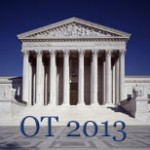Casual Convergence in Unincorporated Entity Law
 Professor Nadelle Grossman has a forthcoming book chapter entitled “Casual Convergence in Unincorporated Entity Law” in the Research Handbook on Partnerships, LLCs and Alternative Forms of Business Organizations (Robert W. Hillman & Mark J. Loewenstein eds., Edward Elgar Publ’g forthcoming 2015). The abstract is below. You can access Prof. Grossman’s full book chapter at SSRN.
Professor Nadelle Grossman has a forthcoming book chapter entitled “Casual Convergence in Unincorporated Entity Law” in the Research Handbook on Partnerships, LLCs and Alternative Forms of Business Organizations (Robert W. Hillman & Mark J. Loewenstein eds., Edward Elgar Publ’g forthcoming 2015). The abstract is below. You can access Prof. Grossman’s full book chapter at SSRN.
As seemingly uniform as the surface of the sea, unincorporated entity acts in most states are drafted from one of the National Conference of Commissioners on Uniform State Law’s (NCCUSL) uniform acts. In fact, by the end of 2013, seven states had adopted NCCUSL’s latest uniform act governing limited liability companies (LLCs), called the Revised Uniform Limited Liability Company Act, or RULLCA, and more have since followed.
Supporters of uniformity, including NCCUSL, argue that uniformity among state LLC acts generates administrative and cost savings. Critics, on the other hand, argue that uniformity undermines state experimentation to achieve more efficient LLC laws.
However, I argue in the chapter that these debates about uniformity are misguided.


